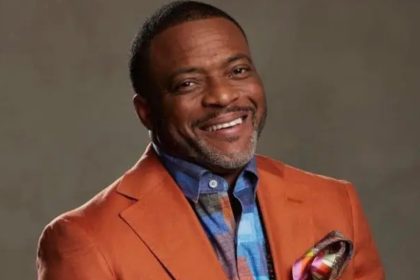
The High Museum of Art announced on Wednesday, Oct. 29 that Michael E. Shapiro, the Museum’s Nancy and Holcombe T. Green, Jr. Director since 2000, will leave the position next year, after 15 years as director. Shapiro has been part of the High’s leadership team for two decades, during which he oversaw unprecedented growth of the Museum’s collections, endowment, and audiences, as well as the completion of a 177,000-square-foot, three-building expansion. Shapiro’s last day as director will be July 31, 2015.
“It has been a privilege to be at the helm of the High for the past 15 years, and to help shape the vision and future of Atlanta’s art museum,” said Shapiro. “From leading the expansion and transformation of our campus in 2005 to developing groundbreaking collaborations, such as ‘Louvre Atlanta,’ the High has been transformed from a regional powerhouse into a nationally and internationally recognized institution. I am exceptionally grateful to be part of a team of such smart, committed individuals whose hard work and scholarship have contributed to the High’s success.”
Since joining the High’s leadership team in 1995 and his subsequent appointment as director in 2000, Shapiro has led the High through unprecedented institutional growth. Shapiro has nearly doubled the number of works in the High’s permanent collection; pursued a dedicated strategy to partner with museums around the world to advance scholarship by bringing masterpieces to the U.S., many for the first time; spearheaded the High’s expansion by Renzo Piano that created a “village for the arts” in Midtown Atlanta; and dramatically increased the reach and impact of the Museum’s education programming and accessibility for school children and diverse audiences.
During his tenure, the High has raised nearly $230 million, including nearly $20 million for acquisitions, and has increased its endowment by nearly 30 percent. Shapiro was also instrumental in ensuring that all seven of the High’s collecting departments have fully endowed curatorial positions including African Art, Modern and Contemporary Art, Folk and Self-Taught Art, and Photography, as well as for Museum Interpretation.
Shapiro, in partnership with the High’s curatorial team, has worked to increase the range and depth of the Museum’s permanent collection. Under his leadership, the High has acquired key works by artists including Radcliffe Bailey, Romare Bearden, Mary Cassatt, Chuck Close, Donald Judd, Anish Kapoor, Jasper Johns, Roy Lichtenstein, Claude Monet, Julie Mehretu, Claes Oldenburg and Coosje van Bruggen, Camille Pissarro, and Joseph Stella, among others. Over the past 15 years, the High has built an outstanding photography collection, with a focus on works by Southern artists and on images relating to the American South, including the nation’s most comprehensive collection of civil rights-era photography. The High has also strengthened its holdings across departments by deepening its collection of works by select artists such as Eugène Atget, William Christenberry, Alex Katz, Ellsworth Kelly, Anselm Kiefer, Gerhard Richter, and Henri de Toulouse-Lautrec, among others.
“Michael Shapiro’s dedication and vision have transformed the High over the past 15 years. He has been instrumental in making the High the cultural cornerstone of the Atlanta community and the region that it is today,” said Louise Sams, chair of the High’s Board of Directors. “On behalf of the entire Board, I want to thank Michael for his tireless commitment to excellence and for always striving to present the highest quality exhibitions and programs for our audiences. We are grateful for his two decades of service and will work with the curatorial team and staff to continue to build on the legacy he will leave behind.”
The Board of Directors of the High will form a search committee to conduct a national and international search for the Museum’s next Director.
Shortly after assuming the High’s directorship, Shapiro embarked on a new series of exhibitions that brought renowned Italian Renaissance masterpieces to the U.S., many for the first time, while simultaneously advancing scholarship. These five exhibitions, which often focused on a small group of works or a single work of art, included “Michelangelo: Drawings and Treasures from the Casa Buonarroti, Florence,” (2001); “Verrocchio’s David Restored,” (2003); “The Gates of Paradise: Lorenzo Ghiberti’s Renaissance Masterpiece,” (2007); and “Make A Joyful Noise: Renaissance Art and Music at Florence Cathedral”(2014). After premiering in Atlanta, these exhibitions often traveled to institutions across the country such as the Art Institute of Chicago, the Metropolitan Museum of Art and the National Gallery of Art.
Shapiro pursued a dedicated strategy over the past 15 years to partner with museums across the globe in order to organize exhibitions and bring masterpieces to the U.S. This included several ambitious and highly successful exhibitions from Europe, such as “Impressionism: Paintings Collected by European Museums” (1999), “Paris in the Age of Impressionism: Masterworks from the Musée d’Orsay” (2002) and “Van Gogh to Mondrian: Modern Art from the Kröller-Müller Museum” (2004). These led the High to a series of partnership-driven exhibitions including “The Art of Romare Bearden” (2005); “Andrew Wyeth: Memory & Magic” (2006); “The First Emperor: China’s Terracotta Army” (2008, the highest attended exhibition in the museum’s history); “Salvador Dalí: The Late Work” (2010); “Titian and the Golden Age of Venetian Painting: Masterpieces from the National Galleries of Scotland”(2010); “Girl with a Pearl Earring: Dutch Paintings from the Mauritshuis” (2013); and “Habsburg Splendor: Masterpieces from Vienna’s Imperial Collections,” which will be presented at the High in fall 2015 in partnership with the Kunsthistorisches Museum, Vienna.
In 2001, Shapiro helped establish the Atlanta Conservation Center as a partnership between the Williamstown Art Conservation Center in Massachusetts and the High Museum of Art. Created to provide conservation services to cultural institutions throughout the southeastern U.S., the Center treats objects such as paintings, frames and works on paper, including photographs.
Following a decade of unprecedented growth in exhibitions, community programming and collection building, in 2005 Shapiro collaborated with renowned architect Renzo Piano on a campus expansion that created three new buildings for the High and transformed The Woodruff Arts Center into a “village for the arts.” This expansion more than doubled the Museum’s size to 312,000 square feet, allowing the High to display more of its growing collection, expand educational and exhibition programs, and offer new visitor amenities to address the needs of larger audiences. The $164 million expansion also strengthened the High’s role as the leading art museum in the Southeast and allowed the Museum to better serve its growing audiences in Atlanta, the region, and from around the world.
“The 2005 expansion was a critical moment in the High’s trajectory, and Michael’s leadership was absolutely key in navigating the Museum through this major transformation,” said F. Terry Stent, former chair of the High’s Board of Directors. “Michael and I worked as partners with a common goal, and he was just as skilled in helping to raise the more than $160 million necessary to complete the campaign as he was in building excitement for the project amongst our members, donors, staff, and the greater Atlanta community.”
In 2006, Shapiro teamed up with Henri Loyrette, director of the Musée du Louvre, to develop “Louvre Atlanta,” an innovative partnership that brought nearly 500 works of art from the Louvre’s collections to the High from October 2006 through September 2009, including many works that had not previously left France. The collaboration, which included student and staff exchanges, publications and symposia, brought more than 1.3 million visitors to Atlanta over the three years. In 2009, Shapiro and the High partnered with The Museum of Modern Art, New York, to launch the MoMA Series, a multi-year, multi-exhibition collaboration, building on successful past collaborations between the High and MoMA. The MoMA Series extended ties between the institutions through professional exchanges, development of educational programs and publications, and reciprocal admission benefits. In 2011, Shapiro again collaborated with the Musée du Louvre, as well as the Crystal Bridges Museum of American Art and the Terra Foundation for American Art, to launch a four-year partnership devoted to producing programming and annual, focused installations of American and European art in the U.S. and Paris.
An important part of Shapiro’s vision has been to increase the number of school children who visit the High and the Museum’s impact on children across the state of Georgia. Since 1995, the High has welcomed more than 1 million school children and teachers, reaching as high as 91,000 annually. In 2004, the High launched its Art Access program, which offers subsidized admission for students from Georgia’s Title I Schools across all grade levels. The goal of the program is to remove the economic barriers that might prevent schools from visiting the museum. In addition to free admission, Art Access includes free teacher resources, student study guides, and related materials for classroom learning before and after a visit to the Museum. In 2013, of the 66,000 schoolchildren who visited the High, more than half of those children received free admission as part of Art Access. Since its inception, the Art Access program has allowed more than 200,000 students to visit the High free of charge.
Shapiro has also been committed to increasing outreach to the diverse audiences that reflect Atlanta’s community, and under his leadership, the High instituted a number of initiatives to expand access for African-American, Chinese-American, and Latino audiences. These include special programs around the High’s presentation of “Frida & Diego: Passion, Politics, and Painting (2013), the Museum’s first completely bilingual exhibition, with Spanish and English wall labels and audio tours, as well as bilingual tour guides. In 2005, Shapiro created the David C. Driskell Prize, the first national award to honor and celebrate contributions to the field of African-American art and art history. Named after the renowned African-American artist and art scholar, the prize recognizes a scholar or artist in the beginning or middle of his or her career whose work makes an original and important contribution to the field. In conjunction with the prize, the High also established the David C. Driskell African American Art Acquisitions Endowment, which allows the Museum to acquire works by Driskell Prize recipients as well as other notable African-American artists.
“All of us with the Woodruff Arts Center have benefited tremendously from what Michael has accomplished during his nearly two decades of leadership of the High,” said Virginia Hepner, president and chief executive officer of the Woodruff Arts Center. “The High is a cornerstone of artistic excellence in the Southeast, and much of that is a credit to Michael’s unending supply of energy, drive and determination. He has had a major impact on Atlanta’s arts scene and created a legacy that will continue to shape our future. The Woodruff Arts Center Trustees join my colleagues and me in expressing our gratitude for Michael’s creative partnership, collaborative spirit and friendship, and we look forward to building upon his outstanding accomplishments.”
In 2010, Shapiro helped establish the Georgia Art Museum Partnership initiative in collaboration with five other Georgia museums: the Albany Museum of Art, the Booth Western Art Museum, the Columbus Museum, the Telfair Museums (Savannah) and the Georgia Museum of Art (Athens). The first partnership of its kind in the state, it allowed for the sharing of resources and collections among museums in Georgia and the Southeast under a three-year pilot initiative, during which these partners would draw on each other’s resources for exhibitions and loans of individual objects, professional development workshops and consultations and collection storage. The collaboration included participation in customized workshops on topics such as fundraising, public relations and marketing, exhibition design, and collaboration between curators and educators. As part of this partnership, staff from each institution received access to a statewide support system, which included professional consultations and curatorial residencies.
“By collaborating to share resources, collections and expertise, I believe that we can learn so much from our peers in the museum community, as the High’s partnerships such as ‘Louvre Atlanta’ have proven,” said Shapiro. “I’m proud that I was able to take what I learned through my experiences fostering collaborations nationally and internationally and share that with my colleagues in our home state of Georgia, allowing other institutions to benefit as well.”
Following his departure from the High, Shapiro plans to remain active in the art world through his board work and as an independent consultant focusing on professional development, best practices and institutional collaborations.
Prior to joining the High, Shapiro previously held positions as director of the Los Angeles County Museum of Art, chief curator at The Saint Louis Art Museum, and as assistant professor in the Department of Art at Duke University, Durham, N.C. He holds a Ph.D. from Harvard University, a Master of Arts degree from Williams College and Bachelor of Arts degree from Hamilton College. He specializes in 19th-century and 20th-century painting and sculpture.
Shapiro has been awarded two of France’s top cultural honors, the Officier des Arts et des Lettres (2011) and Chevalier de l’Ordre des Arts et des Lettres (2005) for his partnership with France in the advancement of the arts. Shapiro has served as secretary of the board of the Association of Art Museum Directors and also serves on the board of the Terra Foundation for American Art in Chicago. He is a member of the Committee on the Visual Arts for Hamilton College and the Bizot Group and serves on the Visiting Committee for the Harvard University Art Museum.










